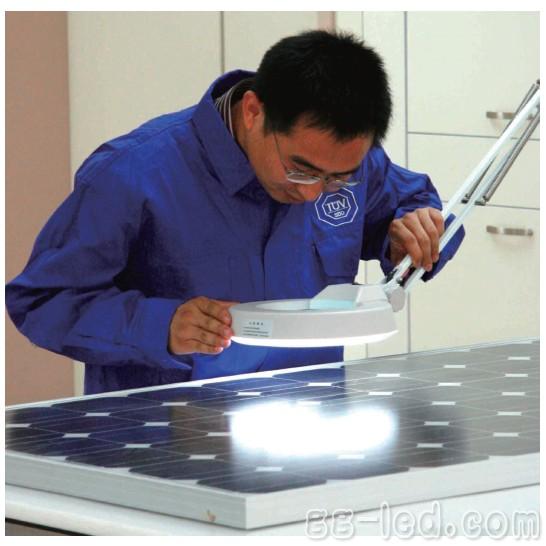[Source: "High-tech new industry" May issue / Yang Yi] The former photovoltaic industry is a wealthy field for a large number of billionaires. Today, what the outside world sees is the sad scene after the brutal competition.
After the madness of the first half of 2008 and the whole year of 2010, the photovoltaic industry has now fallen into a trough. The turmoil in the price of photovoltaic products and the sharp decline in the profitability of various companies have been exposed.
I have to admit that many companies have indeed changed from one worthless to one billion yuan in the past three or five years, but if they can't turn around and don't wake up to realize the difficulties they face, then there is only one way to wait for them. .
How to face such a depressed situation, how to get rid of the difficulties and get rebirth is the biggest problem for all companies.

Dismal market
In 2010, the hot demand in the international markets of Europe and North America, all companies have achieved unprecedented growth.
Suntech's 2010 annual results were as high as US$2.9 billion, up 71% year-on-year, with a consolidated gross profit margin of 17.4% and a net profit of US$262.3 million. Trina Solar achieved a main revenue of US$1.86 billion in 2010, a year-on-year increase of 119% and a net profit of US$312 million.
However, the situation changed suddenly in 2011.
Although the incomes of the above two manufacturers in 2011 have also increased year-on-year, they have all ended in huge losses. Among them, Suntech Power has lost $1 billion, which has caused investors to lose sight of it.
The sharp decline in PV prices is the main reason for the losses of many companies.
According to Pvinsights' report, since January 2011, the price of PV modules has dropped from a high price of US$1.6 per watt to less than US$0.7 per watt, a drop of more than 100%. The price of photovoltaic cells (upstream products) also fell from $1.2 per watt to nearly $0.5 per watt. Thin-film battery assemblies are also falling at an alarming rate, from $1.3 per watt to $0.8 per watt.
In fact, in the German and US markets, PV demand still exists. In 2011, the global solar PV market installed capacity reached a record high of 27.4GW (GW), a year-on-year increase of 40%; but the global PV industry's total output also increased by 25.5% to 29.5GW.
The market pattern of oversupply is the most pre-emptive of the downward price of photovoltaic products.
"The production capacity is too big, and all companies are desperately cutting prices. Some small companies would rather sell a loss because they want to ship." A person in charge of a photovoltaic company in Nanjing told the new industry.
The person in charge said frankly that the only thing that can be done now is to wait for a large-scale recovery of the market before it has the opportunity to ship at a relatively high price.
"From January to March this year, the market has recovered a bit, but the next time is hard to say. Especially after May, the PV subsidy reduction policies of various countries are gradually becoming clear, and the business may be difficult to do." People say.
Manufacturing upgrade
There are still special cases under the turmoil of the market.
Jiangsu Jiasheng Photovoltaic Technology Co., Ltd. (hereinafter referred to as “Jiashengâ€) started to launch mechanical automation photovoltaic processing equipment in 2011. It is expected to reach 500 MW capacity by the end of this year, and will continue to climb in 2013. New automation equipment includes Welding, transportation, laminating feed and discharge devices, etc.
It is reported that the previous production of 300 megawatts requires 400 people, but now it is less than 100 people.
"The reason for replacing the automation equipment is mainly artificial tension." Jia Sheng, chairman of Jiasheng, pointed out that the decline in the price of photovoltaic manufacturing equipment also reduced the company's overall investment.
"The original automatic welding machine is about 1.5 million each, and now the best equipment price is only 1.1 million yuan, and there is less than 1 million yuan." Niu Axing said that the estimated purchase price of photovoltaic module production equipment compared to the highest peak in 2010. The period has dropped by a third. "If it is sold normally, the money to buy equipment will be earned in about 2 years."
A senior executive of Changzhou Tianhua New Energy Technology Co., Ltd. also said that he has certain confidence in the photovoltaic market. Tianhua New Energy’s sales in equipment reached 200 million yuan last year, and five automated production lines were ordered, while the rest The turnover comes from the company's equipment transformation for various PV module manufacturers, such as transportation, plant planning and reconstruction.
The executives expect that sales of automation equipment for Tianhua New Energy will increase slightly in 2012. “In March, about seven 65 MW production lines were set, and one company in Shanghai had five orders.â€
It is reported that under normal circumstances, a 65 MW production line requires more than 20 employees. If it is not a fully automated production line, 83 employees need to be on duty, not including management personnel.

Easy Electronic Technology Co.,Ltd , https://www.yxpcelectronicgroups.com